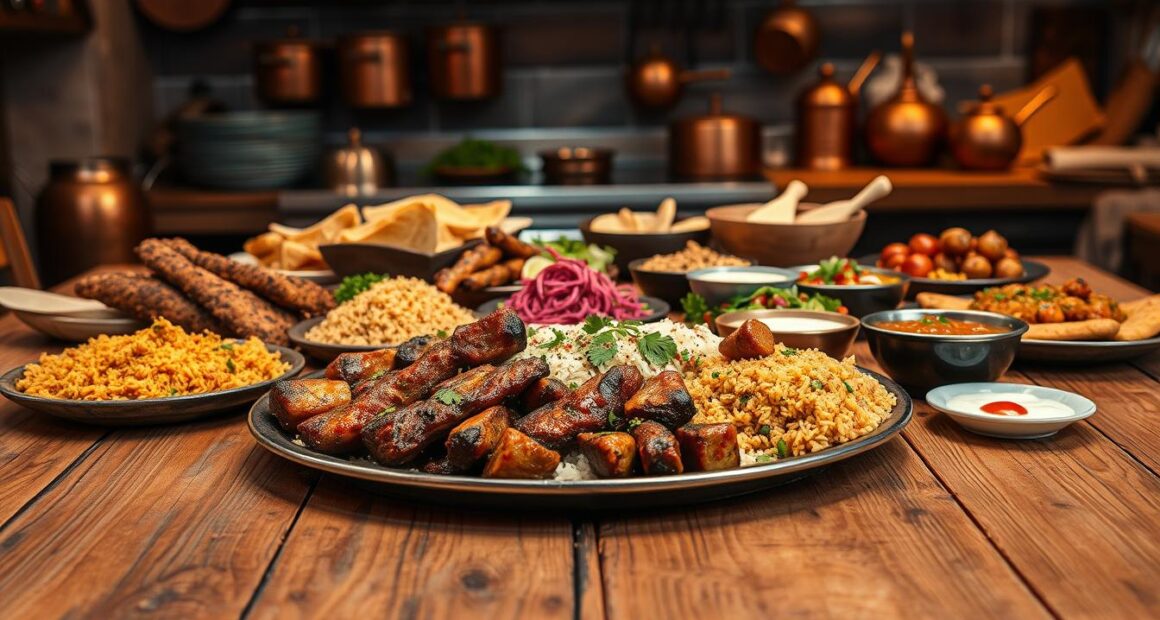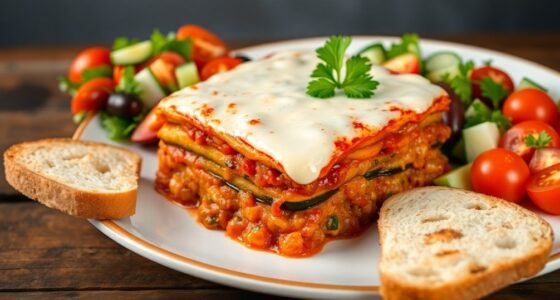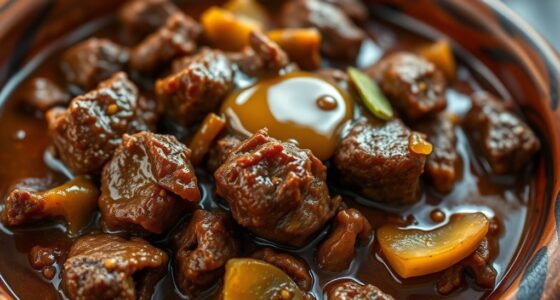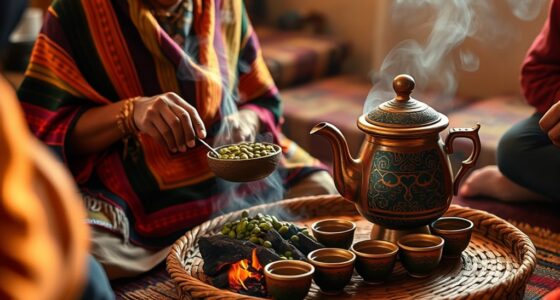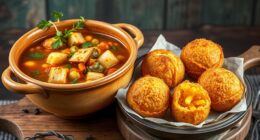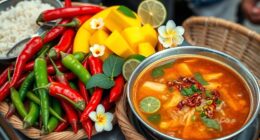Imagine stepping into a bustling market, the air filled with the heady aromas of spices, baked bread, and simmering meats. Afghan cuisine is a feast for the senses, where each dish tells a story of heritage, warmth, and communal spirit. In a world that often feels fragmented, the traditional Afghan food emerges as a vibrant tapestry, woven together with influences from Middle Eastern, South Asian, and Central Asian culinary traditions. As you explore these rich flavors, you’ll discover not only delightful Afghan recipes but also a heartfelt connection to a culture that cherishes family gatherings and shared meals.
At the heart of this celebration of taste lies kabuli pulao, Afghanistan’s national dish, made with aromatic basmati rice and tender lamb or chicken, enveloped in spices that whisper tales of ancient lands. Dishes like mantu dumplings and bolani flatbreads offer glimpses into the Afghan way of honoring guests, where food is more than sustenance — it is an invitation to connect with others in love and fellowship.
Key Takeaways
- Afghan cuisine is influenced by Middle Eastern, South Asian, and Central Asian culinary traditions.
- The national dish, kabuli pulao, is a fragrant blend of basmati rice, lamb or chicken, and carefully measured spices.
- Mantu dumplings are festive treats, filled with minced meat and topped with a savory sauce.
- Naan-e-Afghani, the traditional flatbread, is a staple at every meal, emphasizing the communal dining experience.
- Afghan food balances sweet and savory flavors, creating a unique culinary identity.
- Meals are integral to Afghan culture, seen as an act of hospitality that brings people together.
An Introduction to Afghan Cuisine
Afghan cuisine is a captivating blend of flavors, shaped by a rich tapestry of cultural influences over centuries. Located at the convergence of four major cultural areas—Middle East, Central Asia, Indian subcontinent, and Far East—Afghanistan’s culinary landscape is diverse and vibrant. Historical invasions by prominent figures like Alexander the Great and Genghis Khan have further enriched this culinary tradition. The country is home to several ethnic groups, including Tajiks, Turkomans, and Hazaras, each adding their unique touch to essential ingredients in Afghan dishes.
The Historical Influences on Afghan Food
The culinary heritage of Afghanistan has been significantly impacted by its geographical and historical context. The influx of various cultures has led to a fusion of techniques and tastes that characterize Afghan food today. Traditional celebrations such as Eid-ul-Fitr and Nauroz highlight the importance of communal meals, showcasing the traditional cooking methods passed down through generations. These festivities often feature a range of dishes, from savory pilau to sweet delicacies, illustrating the deep-rooted significance of food in Afghan culture.
Traditional Cooking Methods
Cooking in Afghanistan is often a communal activity, reflecting a spirit of togetherness. Traditional cooking methods heavily emphasize slow-cooked dishes, which allow flavors to develop beautifully. Sharing meals from a common platter is a cherished practice, promoting social interaction. While some modern urban areas are adopting Western dining styles, the essence of traditional methods remains integral, particularly during significant cultural events.
Essential Ingredients in Afghan Dishes
Essential ingredients in Afghan dishes revolve around locally sourced staples like rice, which is often the centerpiece of meals. Fresh vegetables, aromatic spices such as saffron and cardamom, and hearty meats like lamb and chicken create a unique culinary experience. The significance of these ingredients extends beyond nutrition; they connect people to their heritage, weaving stories of land and culture into every bite.
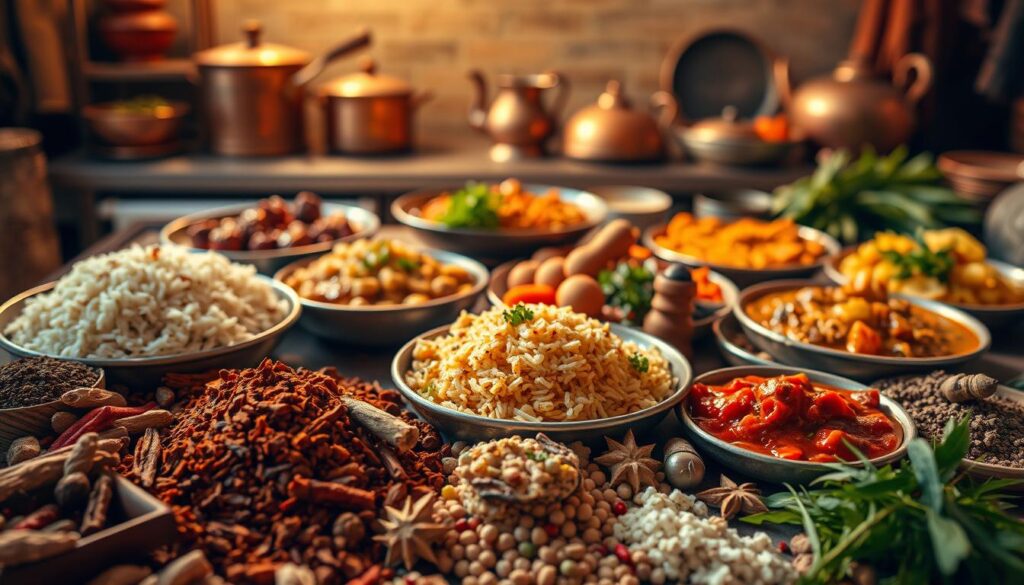
Staple Dishes You Must Try
Exploring Afghan cuisine wouldn’t be complete without tasting its staple dishes. Each dish offers a unique glimpse into the culture and traditions of Afghanistan. The commitment to hospitality shines through in dishes like kabuli pulao, while other favorites, such as mantu, highlight the artistry in Afghan cooking. Here’s a closer look at these quintessential meals.
Kabuli Pulao: The National Dish
Kabuli pulao stands as the national dish of Afghanistan, often symbolizing the essence of Afghan hospitality. This aromatic rice dish combines long-grain basmati rice with tender lamb, beautifully complemented by sweet toppings like raisins and carrots. Each bite brings a burst of flavors that reflect the rich culinary heritage of the region, making kabuli pulao a must-try for any food enthusiast.
Mantu: Delicious Afghan Dumplings
The mantu recipe showcases the delightful Afghan dumplings filled with minced meat, typically beef or lamb. Steamed to perfection, these dumplings are served with a rich tomato and yogurt sauce, enhancing their savory taste. Mantu not only serves as a delicious meal but also represents communal dining, bringing families and friends together to share this beloved dish.
Ashak: Leek-Filled Pasta
Ashak offers a delightful variation in the world of Afghan dumplings, filled with leeks and topped with a vibrant sauce. Often enjoyed at special occasions or gatherings, ashak reflects the diversity and creativity present in Afghan cuisine. These dumplings pair wonderfully with yogurt or garlic sauce, making them a tasty addition to any meal.
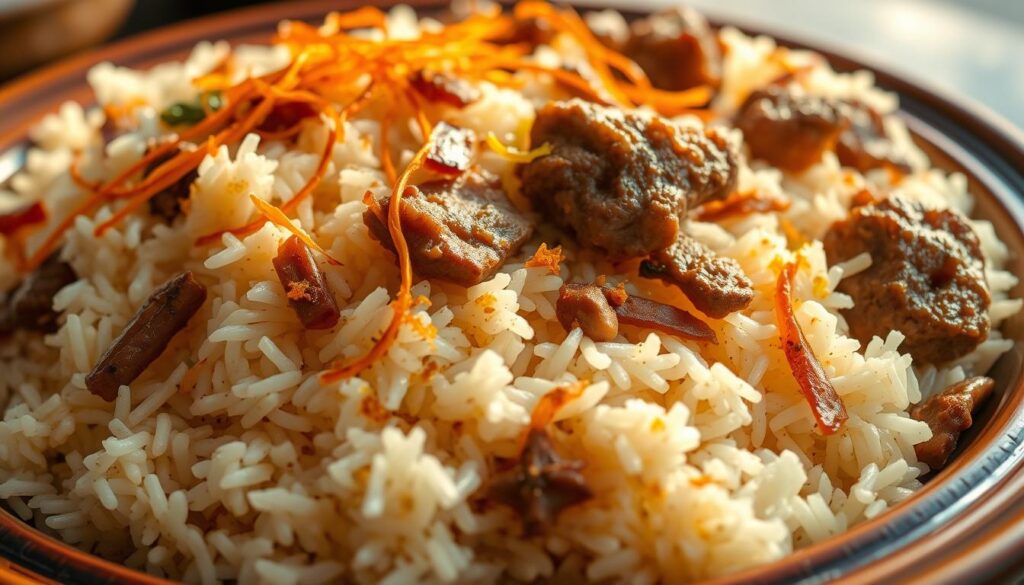
| Dish | Main Ingredients | Serving Style |
|---|---|---|
| Kabuli Pulao | Basmati rice, lamb, raisins, carrots | Served as a main course |
| Mantu | Dumpling skin, minced meat | Served with yogurt and tomato sauce |
| Ashak | Dumpling skin, leeks | Served with sauce and yogurt |
The Role of Spices in Afghan Cooking
Spices are at the heart of Afghan cuisine, giving each dish its unique identity and depth. The variety of afghan spices used in cooking transforms simple ingredients into a flavorful feast. Understanding how to use these spices effectively can greatly enhance your experience in the kitchen.
Commonly Used Spices
In Afghan cooking, several key spices dominate the flavor profiles. Some of the most commonly used include:
- Coriander
- Cumin
- Cinnamon
- Cardamom
- Tumeric
- Black pepper
- Saffron
Coriander is often referred to as the “parsley of Afghanistan” and serves as a staple in many dishes. Cumin and cinnamon are essential for creating rich, warm notes, while saffron adds a luxurious touch to rice dishes like chalau and palau.
Balancing Flavors with Herbs
Achieving flavor balance in cooking is crucial, especially in Afghan recipes. Fresh herbs such as mint and cilantro play an important role, balancing the richness of spices and meats. Dried herbs like dill and fenugreek also add unique flavors that complement the overall taste of the meal.
Signature Spice Blends
Garam Masala is one of the most beloved spice blends, featuring a harmonious mix of cinnamon, cardamom, cloves, cumin, and nutmeg. This blend highlights the complexity of afghan spices and their ability to enhance both meat and vegetable dishes. The art of creating these spice blends lies in understanding how different flavors can work together to produce a delicious outcome.

Afghan Bread: A Cultural Staple
Afghan bread, particularly the beloved naan-e-afghani, plays an essential role in Afghan culture and dining. This bread is more than just a side; it is a fundamental component of meals, often served alongside a variety of dishes. The unique texture and flavor of Afghan bread make it perfect for scooping up curries, stews, and other culinary favorites.
Types of Afghan Bread
There are several types of Afghan bread, each with its own distinctive qualities. Here are a few notable varieties:
- Naan-e-Afghani: A long, oval bread measuring nearly 1 meter in length and 0.5 inches thick.
- Bolani: A stuffed flatbread filled with various ingredients, perfect for a snack.
- Afghani Roti: A traditional unleavened bread often used in everyday meals.
The Process of Making Afghan Bread
The method of traditional bread-making in Afghanistan involves time-honored techniques that enhance flavor and texture. Making naan-e-afghani requires approximately 5 cups of flour, 1 to 2 tablespoons of yeast, and other key ingredients such as sugar, butter, and milk. The process begins with mixing these components and kneading the dough, which must rest for a full 8 hours. This resting period allows the bread to develop its unique character.
Once the dough has rested, it is rolled out and baked in a tandoor oven, which gives the bread its characteristic chewy texture. As it bakes, the naan-e-afghani takes on a delightful flavor helped by spices like cumin and nigella seeds, which can be added on top. The typical baking temperature is set at 350 degrees Fahrenheit, with the bread moved to the top rack after about 30 minutes to ensure even cooking.

The result is a delicious naan-e-afghani that complements any meal. Maintaining the freshness of Afghan bread is straightforward; it can be stored at room temperature in an airtight container. For longer storage, the bread may be refrigerated or even frozen, preserving its excellent quality for up to three months.
| Ingredient | Quantity |
|---|---|
| Flour | 5 cups |
| Sugar | 1 1/2 to 2 cups |
| Baking Powder | 1 tablespoon |
| Yeast | 1 to 2 tablespoons |
| Ground Cardamom | 1 tablespoon |
| Softened Butter | 1 cup |
| Milk | 1 cup |
| Eggs | 2 |
| Egg Wash | 1 egg + splash of milk |
| Poppy Seeds & Nigella Seeds | For topping |
Sweets and Desserts to Indulge In
Exploring Afghan dessert recipes reveals a vibrant array of traditional sweets that showcase the rich culture and flavor profiles of Afghanistan. The best desserts from Afghanistan include a variety of delightful options that satisfy any sweet tooth, often featuring ingredients like nuts, syrup, and spices. Let’s take a closer look at some of the most popular choices that you must try.
Baklava: A Sweet Treat
Baklava is a classic favorite among Afghan dessert lovers. This rich pastry layers flaky dough with a mix of nuts, sweetened and spiced to perfection. Drizzled with syrup, it delights your palate with every bite. Not only is it a staple in Afghan cuisines, but it also holds a special place in many celebrations, making it an essential offering at gatherings.
Sheer Khurma: A Festive Delight
Sheer Khurma is a luxurious dish prepared during festive occasions like Eid. This delightful concoction features vermicelli noodles simmered in sweetened milk, often adorned with dates and nuts. The delightful taste serves as a symbol of joy and celebration, making it one of the best desserts from Afghanistan.
Jalebi: Crunchy and Sweet
Jalebi offers a unique textural experience with its crunchy, spiral shape, infused with flavors such as saffron, cardamom, and rose water. This beloved street snack, often enjoyed with tea, has a sweetness that resonates with many, resulting in a 70% acceptance rate among those who try it. Jalebi contributes significantly to the festive atmosphere and casual eating experiences alike.

| Dessert | Main Ingredients | Festive Occasions |
|---|---|---|
| Baklava | Flaky pastry, nuts, syrup | Weddings, Eid |
| Sheer Khurma | Vermicelli, milk, dates | Eid |
| Jalebi | Flour, saffron, sugar syrup | Casual snacks, festivals |
These treats are just the beginning of what Afghan dessert recipes have to offer. The emphasis on natural flavors and quality ingredients in traditional sweets makes these desserts truly remarkable. Indulge in the sweetness that Afghan culture brings to life, and you will find a world of joy and flavor waiting for you!
The Afghan Feast: How to Host
Hosting an Afghan meal is a rewarding experience that emphasizes hospitality, warmth, and a rich tapestry of flavors. Your gathering should reflect the essence of an afghani feast, where sharing food symbolizes respect and bonds among friends and family. Understanding traditional dining etiquette enhances this experience and ensures your guests feel cherished.
Traditional Afghan Dining Etiquette
When you host an Afghan feast, presenting food in a family-style format creates an inviting atmosphere. Guests typically gather around the table, where dishes are served communally. Use bread to scoop stews and rice, following the Afghan custom of eating with your hands. Offering a selection of savory and sweet dishes invites everyone to explore the diverse culinary landscape.
Essential Dishes for Your Feast
Your menu should feature essential dishes that highlight the flavors of Afghan cuisine. Begin with Kabuli Pulao, the national dish of Afghanistan, known for its tender meat and fragrant rice. Consider including saffron chicken and an assortment of regional dishes like Mantu, delicious dumplings often served during special occasions. A well-rounded afghani feast also includes various side dishes to complement the main offerings, ensuring a rich and satisfying experience for all guests.
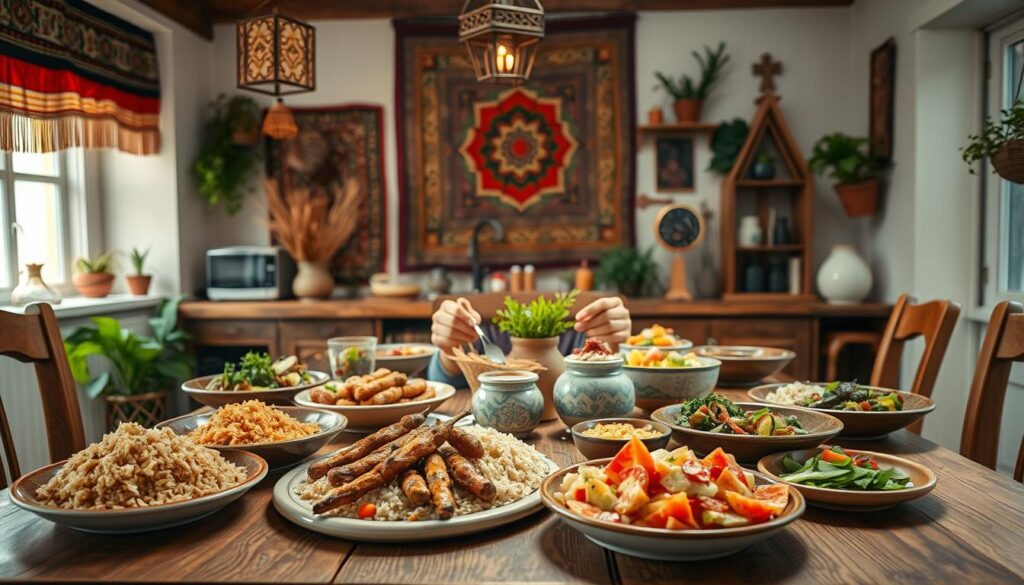
Vegetables and Sides in Afghan Cuisine
Your exploration of Afghan cuisine wouldn’t be complete without a deep dive into the essential vegetables and side dishes that add depth and flavor to meals. Afghan cooking emphasizes the use of fresh, seasonal vegetables Afghanistan has to offer, often highlighting their significance in a balanced diet. Incorporating these ingredients into traditional dishes enhances not only taste but also nutritional value.
Seasonal Vegetables
In Afghanistan, vegetables are not merely accompaniments but key players in many recipes. Seasonal vegetables such as spinach, eggplant, and pumpkin are staples frequently found in Afghan homes. For instance, Afghan sabzi, a delectable spinach dish, utilizes around 3–4 lbs of frozen spinach, enriched with spices like cumin and coriander, alongside onions and garlic. This dish not only serves as a delicious afghan side dish but also offers incredible health benefits, being rich in iron and vitamins.
Popular Side Dishes
When you think of healthy Afghan sides, consider the warmth and flavor of Borani Banjan, which layers eggplant, onions, and tomatoes into a delightful presentation. Another notable dish is Lubya, featuring tender kidney beans cooked in a spicy curry, showcasing the variety of legumes used in Afghan vegetarian fare. Serve these alongside classic elements like naan and salad, such as Bonjan Salat, to create a well-rounded meal that honors Afghan tradition.
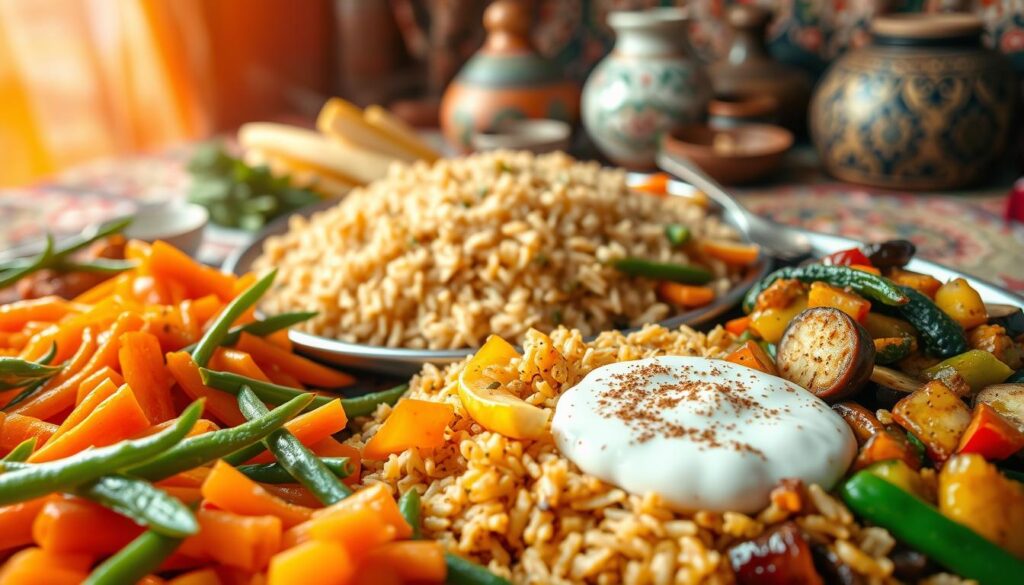
Exploring Afghan Beverages
A vibrant aspect of Afghan culture lies within its beverages, essential for both hospitality and everyday life. Of the numerous choices available, traditional tea holds a prominent place. Afghan drinks are integral to social gatherings, providing warmth and connection among friends and family. The unique flavors and communal spirit behind these beverages make them an appealing part of any meal.
Traditional Drinks to Try
In Afghanistan, tea consumption is a daily ritual, deeply embedded in the culture. Afghan green and black tea are favorites, typically infused with spices like cardamom, offering a delightful aroma and taste. Serving tea is an important gesture of hospitality, enjoyed before, during, and after meals. This traditional tea exemplifies the significance of connection and conversation in Afghan gatherings.
Afghan Tea: A Social Experience
Alongside tea, Doogh is a widely enjoyed yogurt-based drink that serves as a refreshing counterpart to spicy dishes. This cold beverage, flavored with mint, embodies the spirit of Afghan culture, especially during hot summer days. Both Doogh and traditional tea enhance the overall dining experience, showcasing the diverse beverages from Afghanistan that add depth and flavor to each meal.

Regional Variations in Afghan Cooking
Afghanistan’s rich culinary scene showcases a tapestry of flavors developed in response to its diverse geography and cultural influences. As you explore regional Afghan food, you will discover the nuances between northern and southern Afghan dishes that reflect the unique characteristics of each area.
Northern Afghan Cuisine
Northern Afghan dishes are heavily influenced by the region’s historical ties to Uzbekistan. This results in a delightful array of dough-based items. Popular options include aush, a comforting noodle soup, and aushak, flavorful dumplings filled with herbs and topped with yogurt. The region also stands out for its meat-centric options, especially from Ghazni, which is celebrated for its robust beef and lamb specialties. Meals here often include bread varieties like naan and lavash, complemented by fresh, seasonal vegetables.
Southern Afghan Cooking
Southern Afghan specialties emphasize bold flavors and a spice-forward approach. This region is known for heartier dishes that feature spices and herbs uniquely blended to reflect local tastes. Notable dishes include kuku, an herby frittata often enjoyed during communal meals. Unique ingredients, such as the famed Afghan pomegranate, frequently grace tables, adding sweetness to savory dishes. Additionally, summer meals often feature doogh, a refreshing yogurt drink infused with cucumber and mint, providing a cooling balance to spicy foods.
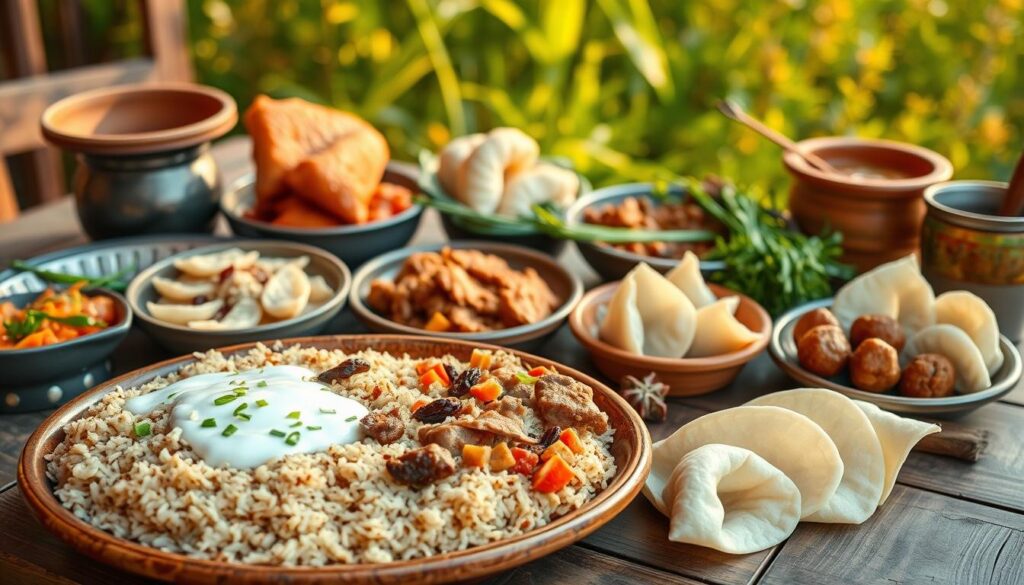
| Characteristics | Northern Afghan Cuisine | Southern Afghan Cooking |
|---|---|---|
| Influence | Uzbek culinary heritage | Persian flavors |
| Main Ingredients | Dough-based dishes, meats | Spices, herbs, fresh fruits |
| Typical Dishes | Aush, aushak, bolani | Kuku, shor nakhod |
| Common Beverages | Chai, fresh yogurt drinks | Doogh, herbal tea |
Exploring these regional tastes provides deeper insight into the communal aspect of Afghan dining, highlighting the importance of hospitality and sharing. Every meal is an opportunity to connect and experience the heart of Afghan culture through its food.
Vegetarian and Vegan Options
Exploring Afghan cuisine reveals a delightful array of vegetarian and vegan options that highlight the rich flavors of plant-based ingredients. As you dive into these dishes, you will discover how they capture the essence of traditional Afghan cooking while meeting the needs of those seeking healthy plant-based meals. Whether you are craving something new or looking for familiar flavors, there is something for everyone.
Plant-Based Dishes You’ll Enjoy
Among the numerous vegetarian Afghan recipes, options like Borani Banjan stand out as favorites. This dish features eggplant cooked in a savory tomato sauce, making it a staple at gatherings and events. Another exciting choice is Qorma-i-Sabzi, made primarily with spinach. Its prevalence in homestays and upscale restaurants highlights the growing appreciation for vegetarian meals in Afghan culture. For more traditional fare, Kabuli Palau can often be found in vegan versions, where meat is substituted with young jackfruit, providing a scrumptious alternative.
Nutritional Benefits of Afghan Vegetables
The emphasis on fresh, seasonal vegetables in vegan Afghan cuisine contributes to a wealth of health benefits. Ingredients like spinach, peas, and a variety of spices not only enhance flavor but also deliver essential nutrients. Often served alongside salads, these healthy plant-based meals help create a balanced and vibrant dining experience. You will find that Afghan bread complements these dishes beautifully, rounding out a meal that reflects both nourishment and tradition.
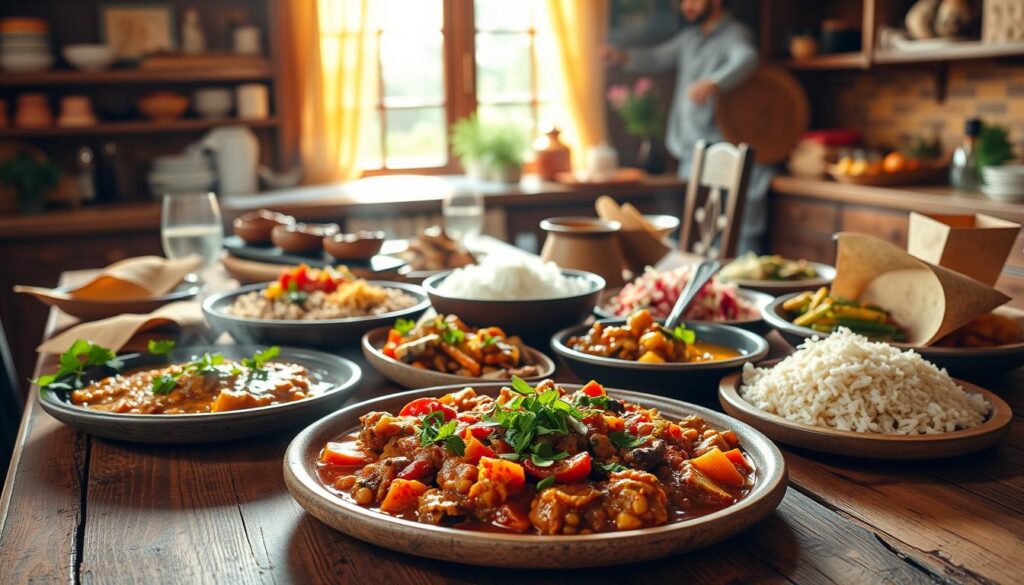
Afghan Cuisine Around the World
Afghan cuisine is steadily gaining recognition across the globe, appealing to the adventurous food lover in search of diverse culinary experiences. The richness of its flavors and variety of dishes capture attention and foster interest in this unique cultural heritage. As more people discover Afghan flavors, restaurants specializing in this cuisine have begun to flourish, particularly in the United States.
How Afghan Food is Gaining Popularity
The increasing visibility of Afghan cuisine worldwide reflects a growing curiosity about diverse cultures. Social media platforms play a crucial role, where food enthusiasts share and promote Afghan dishes, drawing attention to their distinct tastes. This surge in interest encourages people to explore traditional meals like Kabuli Pulao, regarded as the national dish. With a medley of ingredients showcasing Afghan culinary practices, it has become a highlight in many food blogs and culinary discussions.
Notable Afghan Restaurants in the U.S.
In the U.S., popular Afghan restaurants such as Afghan Grill and Bamiyan Afghan Cuisine stand out for their authentic offerings. Diners can explore a range of traditional dishes that celebrate diverse regional influences. These establishments not only provide a meal but also an educational experience, introducing patrons to the rich tapestry of Afghan cuisine worldwide. The menu typically features iconic items, including succulent lamb kebabs and fragrant rice dishes, enabling you to fully immerse yourself in the culinary landscape of Afghanistan.

Cooking Afghan Cuisine at Home
Bringing the delicious flavors of Afghan cuisine into your home can be a rewarding experience. With the right preparation and knowledge, you can create authentic dishes that impress family and friends. Understanding the essential kitchen tools for Afghan cooking is the first step to success. Investing in traditional implements will greatly enhance your cooking endeavors.
Essential Tools for Afghan Cooking
To master cooking Afghan recipes, certain kitchen tools for Afghan cooking become indispensable:
- A heavy pot or pressure cooker to ensure even cooking of proteins and grains.
- A tandoor oven for authentic bread-making, allowing you to recreate traditional naan experiences.
- A mortar and pestle for grinding spices, which adds depth to your dishes.
- Measuring cups and spoons to ensure precise ingredient ratios, especially when cooking rice.
- Skimmers and ladles to manage boiling and simmering processes effectively.
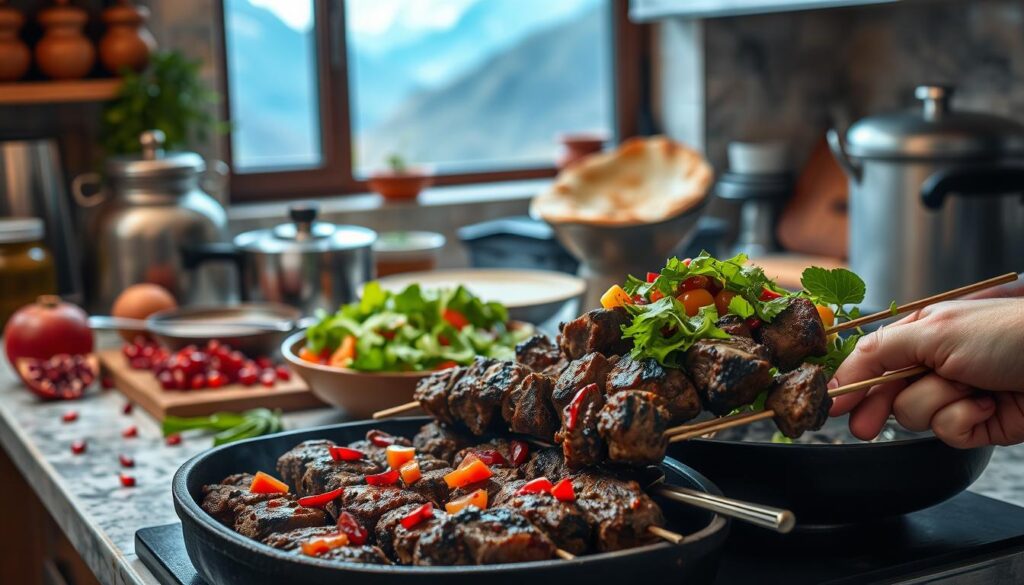
Tips for Beginners
If you’re new to Afghan cooking, here are some beginner cooking tips to help you get started:
- Begin with simple recipes like aush soup or traditional flatbreads to build confidence and skills.
- Take the time to soak basmati rice for several hours; this helps achieve a perfect texture during cooking.
- Familiarize yourself with unique spices such as whole green cardamom and cumin, which are essential in Afghan flavors.
- Experiment with layering techniques in dishes such as Kabuli Pulao, which enhances both flavor and presentation.
- Keep your cooking environment organized to make the experience enjoyable and efficient.
By following these suggestions, you will find cooking Afghan recipes both enjoyable and fulfilling. Your journey into Afghan cuisine offers a rich exploration of flavors that will surely delight your taste buds.
Resources for Afghan Cooking
If you are eager to deepen your understanding of Afghan cuisine, there are many valuable afghan cooking resources available to explore. Books can provide a solid foundation, offering a wealth of authentic recipes and insights into the cultural significance of various dishes. One notable title, “Afghan Food and Cookery,” includes a diverse range of recipes that reflect the rich influences from neighboring countries such as India and Persia, allowing you to experience the flavors of Afghanistan from your own kitchen.
Books on Afghan Cuisine
Diving into afghan cooking books is an excellent way to get started. Many authors share their expertise on traditional cooking techniques and essential ingredients like lamb, rice, and flavorful spices. These texts often feature detailed instructions and background stories, giving you a deeper appreciation of Afghan culture and culinary traditions while enhancing your cooking skills.
Online Courses and Recipes to Explore
For those who prefer more interactive learning, various online cooking courses and video tutorials can greatly benefit your culinary journey. These platforms frequently offer step-by-step guides on preparing classic dishes such as Kabuli Pulao and lamb kebabs. Whether you’re a beginner or looking to refine your skills, these resources can help you master the nuances of Afghan cooking and bring the delightful flavors of this cuisine into your home.
